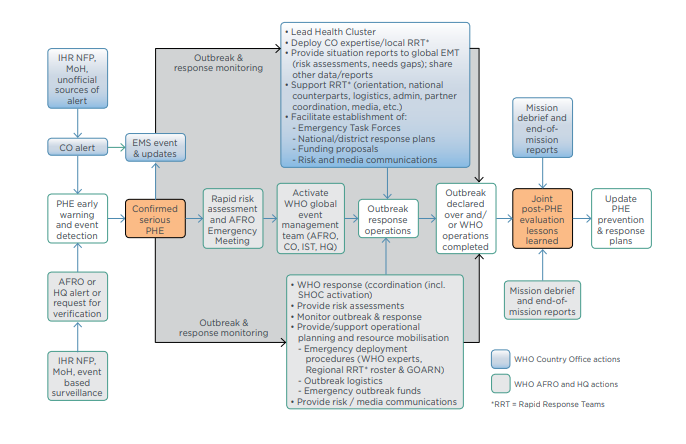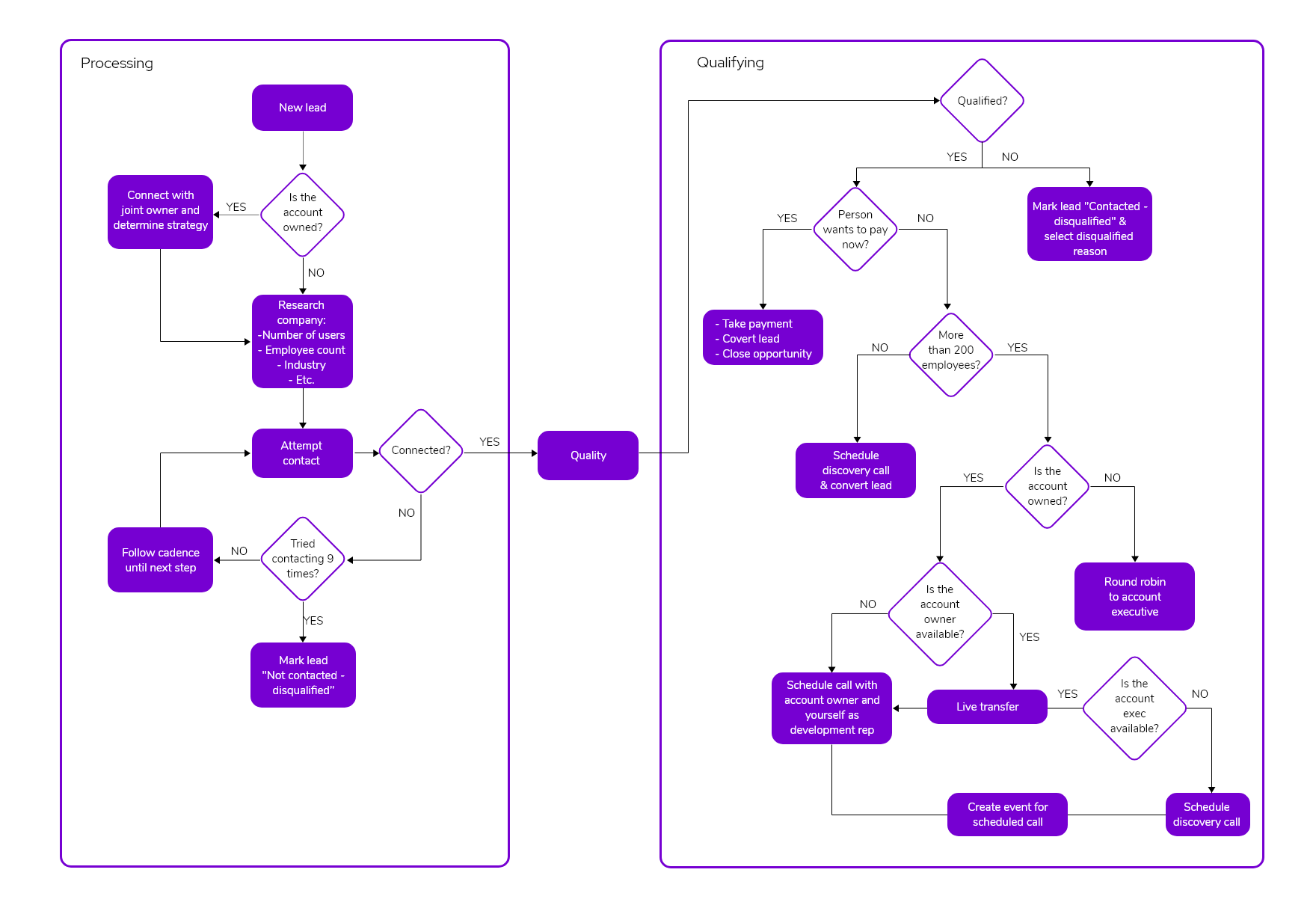If you’re reading this article you’re likely to be looking for guidance on how to write standard operating procedures for your business, to ensure better processes are communicated to your team and that they are followed.
Why SOPs are important
SOPs must clearly communicate the processes of your business to standardize operations and ensure profitability, quality, and efficiency. These manuals can serve other purposes – to impose a set of rules, defining roles and relationships, guarding against the loss of key personnel, compliance, and more.
Their most important function is to make sure your staff do things right. Manuals should describe how to do things in clearly defined steps, and you need to create a SOP for every process.
How do you write standard operating procedures
Step 1: Decide how to format your SOPs
You can choose from a variety of structures and formats when it comes to presenting your standard operating procedures. Large companies will probably want to adhere to the international standard ISO 9000 or something similar.
It’s not required to follow international rules to write a good standard operating procedure. You can write a SOP with the following structure:
-
- Intro
- Summary
- Details
- Overview
- Related checklists
The format you choose depends on a number of variables – as a large company, you’ll need to have SOPs that adhere to the company’s internal policies and standardizations. As a solopreneur, in contrast, you’ll likely lean towards a much simpler presentation.
Here are three main formats you can choose from:
A simple checklist – outline all the tasks involved so that it looks like a to-do list. This approach has advantages for small teams who don’t require detailed instructions. This approach means you can build SOPs quickly and your people can do so as and when they perform new tasks.
A complex linear checklist – this is an expanded version of the previous option. Your checklist should contain as much detail in the process as possible. A single task may require a sub-checklist of further tasks to expand on the process. The goal is to document a process so watertight that anyone could take over and perform the tasks.
-
A process flow diagram – use a flow diagram as a way of visualizing your standard operating procedure and how all the parts fit together to form a whole. -
Step 2: Bring together the relevant stakeholders
SOPs shouldn’t be created in a vacuum. If you’re creating them to document particular workflows, tasks and processes then you should communicate clearly with the people already in charge of performing them.
If you manage a team already working each day on the tasks you want to document, you should get an idea of best practices from them and incorporate these into your SOPs. Creating your processes collaboratively not only brings more expertise and scrutiny over the work, but the people following your SOPs will feel more of a sense of ownership over them.Step 3: Discover your purpose
Think about what you want to achieve as you create your standard operating procedures. If they are completely new, then you are trying to build functional systems. If you want them to function well, then you’ll need to make sure the priorities of the processes align with business priorities.
If your SOPs are documenting existing workflows and processes, then you need to consider what your pain points are. If your existing processes are letting you down, then you need to figure out what you can do to change them. The current system may be too slow or producing a product that’s not of sufficiently high quality.
You’ll need to create a detailed process breakdown of the tasks involved and ensure the standards are met every time the task is completed.
-
Step 4: Identify the structure of your SOPs
In a large company, your standard operating procedure will be structured as a formal report, including a cover page with the title and related reference materials, followed by a list of chapters and the process itself.
In a small company, your SOPs are likely to be much less formal. Decide on a common sense structure and follow it for all your SOPs.
Here’s a list of example structures:-
- Neatly formatted narrative
- Step-by-step bulleted or numbered lists
- Tables
- Step-by-step photos
- Step-by-step graphics
- Flowcharts
- One-page graphics
- Checklists
Step 5: Define the scope of the procedure
If you’re formulating a set of standard operating procedures for the product team’s work, you should focus on them and their needs. You need to understand where to draw the line to stop you straying into the remit of other teams or departments.
-
-
A workflow may in fact involve multiple teams but you should know from the start whether this is the case. Clearly define the limits of your work or you’ll end up with scope creep.
Work out what you’re dealing with – what action defines the beginning of the process? What action signals the end of the process? Defining your scope is essential to creating a successful SOP.Leave no room for errors by documenting your procedures!
Book a Demo
Step 6: Use a consistent style
It’s worth saying again that if you’re working for a large corporation your soaps are going to be a lot more formal than your startup team of three. Whether you’re going to be using professional formal language or not depends upon the setting you’re in.
The following tips are applicable no matter what company you work for:
Begin with action commands – always use a verb at the beginning of a statement for a task. This kind of language clearly communicates what you have to do and is impactful for your audience.
Be concise – make an effort not to digress in a SOPs manual. Ensure your writing is clearly and transmits only the most essential information.
Make it scannable – don’t make your readers sift through paragraphs of text to find what they need in your SOPs. Include the actionable sections first and put the explanation afterwards. Use headers to break up your text.Step 7: Work out the necessary steps in the process
This is the step where you put in the hard work of laying out your SOP. Walk through the procedure from start to finish noting down every step in the process. Ask for input and discussion across the team, and note down any extra steps that are suggested.
Once you have the skeleton of the procedure, go through and examine each task you have recorded and figure out if any sub-tasks are required. Are there any steps of the procedure that require further explanation? Spell it out in a subtask.Step 8: Assess potential problems in your process
Once you’ve written your process down, it’s time to work out where things are likely to go wrong. Where is failure likely to happen when executing your SOP?
If you’re using your SOP to document a manufacturing process, you can run the calculations to see whether your SOP works properly. Maybe your process leads to high output in terms of production but has problems when it comes to distribution? Every business is different and problems are likely to occur in unique ways.Step 9: Test your SOP
Now you’ve finished your SOP it’s time to see whether it actually works in practice. Ask the people who are actually following your instructions to test them out and find any bugs in the process.
We’ll look at a sales example – say you have a team of 10 and you set 3 people to follow the new procedure. This controlled test of the new SOPs will allow you to gather comparative data on the performance of the new and existing model. -
If you’re happy that your new business process is superior to the previous one then you can implement it straight away.
Step 10: Launch your SOP into the world
Your SOP is now ready to be finalized and implemented in your business. If you’ve followed these instructions from beginning to end then your SOPs are guaranteed to improve your operations.
Once your standard operating procedure is complete, you need to communicate the new manuals to your team and ensure they are followed. -
Create and implement a roll-out plan and inform staff that SOPs are changing. Hold launch events and training to introduce the new SOPs to your staff.
Final remarks
Take the time to research and test your SOPs before launching them to the company at large. Create your SOPs collaboratively so you’re making the most of the knowledge and insight your employees have into your processes.
-
Also Read: How to Write an Employee Handbook with Examples
Remember to keep your SOPs up-to-date so they remain the single source of truth for your business’s operations. Continuously promote your SOPs as procedures for your employees to follow, and listen to feedback to help improve them.An intuitive SOP software to easily add your content and integrate it with any application. Give Document360 a try!
Get Started










